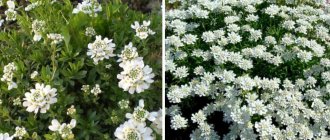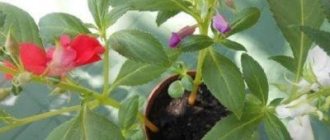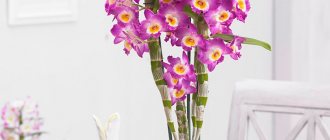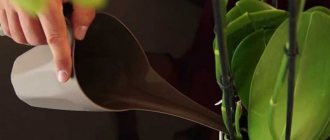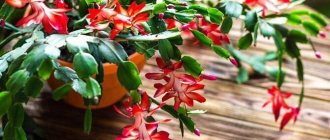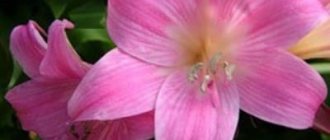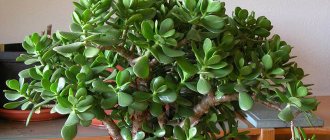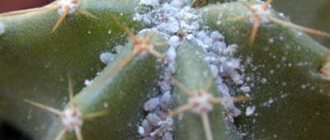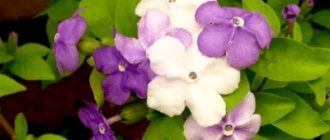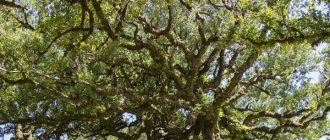Genus Bouvardia is directly related to the madder family. It is represented by not very tall evergreen flowering herbaceous plants, as well as shrubs. In nature, they can be found in the subtropical and tropical regions of Central America and Mexico.
Plants of different types can have different heights from 50 to 150 centimeters. Erect, slightly branched shoots have sparse internodes. They bear short-petioled whorled or opposite leaves. The simple leaves reach 3–11 centimeters in length and are broadly lanceolate to lanceolate in shape. They can also be ovoid in shape with a pointed tip. The leaf blade is slightly leathery and smooth.
Flowering is long lasting. It lasts from the beginning of summer to the end of autumn, and sometimes blooms in winter. Multi-flowered large fragrant inflorescences are similar to a bouquet. They grow at the ends of annual stems and in some species their diameter is 15 centimeters. Tubular flowers have 4 petal blades that are bent.
Description of Bouvardie
Bouvardia is a perennial bush, the size of which depends on the variety. It is grown both in gardens and at home. The stems grow straight up , pointed leaves grow from the trunk, framing the inflorescence at the top.
The flower looks like a tube with 4 petals bent outward and exudes a light aroma. Due to the group of flowers, a spherical inflorescence is formed on a high peduncle. It is widely used by designers in bouquet arrangements for wedding photos.
The shrub is a perennial, reaching a height of up to 1 m. Low-growing varieties of Bouvardia .
Homeland of the flower
Bouvardia is native to the hot subtropical regions of Central America. Bouvardia came to European countries around the 17th century. It was in Europe that experienced breeders developed new varieties and hybrids of this flower and, one might say, turned it into the most beautiful home flower.
For example, in Holland in the 20th century, complex plant hybrids were developed that were successfully used for holiday bouquets and especially bridal wedding arrangements. More than 10 varieties of plants are used for floristry all year round.
Flowers are cut either in the form of buds or with 2-3 open flowers. For wedding celebrations, the most popular are cuts of the white type of Bouvardia.
Pink bouvardia in the form of buds in a bouquet can especially emphasize the beauty of the moment and the femininity of the bride. In water with special fertilizing, bouquets with bouvardia can last more than 2 weeks.
Main types
Varieties of bouvardia differ in the color and height of the bush.
Bouvardia yellow bouvardia flava
The telling name is given for the yellow color of the flowers. The tall bush grows up to 1.5 m, which is more suitable for cultivation in garden plots.
Bouvardia longiflora
This type of Bouvardia is distinguished by its longer flowers, which form an inflorescence at the top of the stem, reaching a height of up to 90 cm. The color range varies from white to pink.
Bouvardia jasminiflora bouvardia jasminiflora
Similar to jasmine, white with fragrant flowers. Plant height ranges from 60 to 90 cm. Unlike other species, it blooms in winter.
Bouvardia domestica
A specially designed variety for growing on windowsills. The dimensions of the plant are more compact, the height reaches 70 cm . Home bouvardia, the flower of which has smooth or double petals, blooms in summer or autumn.
The color range is wide due to the variety of pink and crimson shades. Bouvardia rosea is very popular
Plant characteristics
Lantana flower - planting and propagation
The height of the flower can vary from 0.5 m to 1.5 m. It depends on the variety. The plant has a rather weakly branched erect stem with sparse internodes, and the leaves are opposite or whorled, short-petioled. The leaf blades themselves have a simple, uncomplicated shape, can be up to 11 centimeters long, can be ovoid with pointed apices, as well as lanceolate and broadly lanceolate. The leaf surface is smooth and may be slightly leathery.
Bouvardia includes about 30 species. The most direct relatives of this plant are gardenia and coffee.
The plant blooms for quite a long time, and flowering persists for several months, usually starting in early summer and lasting until mid or late autumn, and sometimes even until the beginning of winter.
The blooms look like bouquets consisting of large flowers; in some species they reach 15 centimeters in diameter. Such bouquets develop at the ends of shoots that live for one year. The flowers themselves are tubular, they have four petals that bend closer to the edges.
The blooms are so attractive that they attract a huge number of pollinating insects, and in their homeland they are popular with local hummingbirds.
Nowadays, you can find about 30 species of this plant, but only 11 of them can be year-round.
If you make a bouquet from Bouvardia flowers, it can last about two weeks, and bouquets from the Royal variety can last from 15 to 24 days in water with fertilizing or fertilizers. And also the life of a bouquet of bouvardia can be preserved longer if there is an appropriate temperature regime; at cool nights, they should be taken to a cool place, for example, on a balcony, the temperature should be up to 8 degrees Celsius.
When making bouquets, bouvardia is often combined with eucalyptus leaves, which gives a luxurious look to floral arrangements and pyramids. It also goes very well with asparagus, tillandsia, boronia and brunia.
Optimal growing conditions
In garden conditions Bouvardia is unpretentious ; you need to give it a place with sufficient lighting.
Home care is quite simple. For the windowsill, small pots of small depth are selected, which will be sufficient for a superficial root system.
Lighting
In natural habitats, comfortable conditions are the warm, illuminated areas of South America. Therefore, windows on the south or east side for a long period of illumination.
Advice! In summer, it will be good for bouvardia to breathe fresh air on the balcony or street, this will promote abundant flowering.
Temperature
During the period of flower formation, the temperature should be moderately warm, within 22 – 25 degrees. It’s good if it’s cooler at night than during the day, such as on the balcony.
In the winter season, all species, except Bouvardia jasminiflora, which blooms at this time, are removed to a cool place with a temperature of at least 10 degrees to rest.
Watering
During the active period, the plant is watered regularly in moderate quantities . The golden mean would be moistening after the top layer of soil dries before the first drops appear on the base of the pot.
Important! Bouvardia loves gentle watering, for which tap water should first be settled or rain (melt) water should be used.
In winter, watering is reduced to once a week.
To prevent root rot, the pot must have a small volume of soil with a bottom lined with drainage.
Air humidity
In the dry climate of an apartment, the leaves may become limp during the heating season, so it would not be superfluous to spray the bouvardia with water at room temperature a couple of times a month . This procedure will also remove accumulated dust from the plant.
In summer, especially in hot weather, it is useful to refresh the plant with evening spraying. You should not do this during the day so that the water on the leaves does not cause burns under the scorching sun.
Soil and fertilizing
loose, nutritious soil is suitable for bouvardia. You can buy ready-made soil for all indoor plants, adding a little sand or perlite to it for better aeration of the roots.
If you prepare the soil yourself, you will need:
- 2 parts peat.
- 4 parts turf soil.
- 1 part leaf soil
- 1 part sand or perlite.
Feeding is necessary during the period of rapid growth every 10 - 14 days. For the unpretentious Bouvardia, universal complex fertilizers for indoor plants are suitable. , fertilizing for flowering crops can be .
In winter, fertilizers are not used as the plant is dormant.
Trimming
After the flowering period is completed, bouvardia is pruned to form a lush crown for the next season. Some gardeners also perform pruning in the spring season before active growth begins. You can leave up to a quarter of the length of the shoots .
Transfer rules
Experienced gardeners believe that Bouvardia should be replanted when the previous pot is already too small for it.
Important! In the second year of life, Bouvardia has the most beautiful and abundant flowering. Later flowering may be sparse, so it is best to grow this plant as a biennial.
The best time for transplantation is spring. Most often, only a plant whose lifespan is about 1 year is replanted. For such bouvardias, gardeners select a container with a larger diameter. It should be remembered that the good development of bouvardia depends on how nutritious the soil is and how permeable it is to water and air.
It is interesting to read about the intricacies of propagation of other plants: orchids, zamioculcas, dieffenbachia, shefflera, laurel.
Reproduction methods
several ways to get new plants .
Apical cuttings
During the period of pruning the bush, you need to use a sharp knife to cut off a cutting with 2 to 3 internodes from the top of the stem and place it in water until the roots appear. Shoots with well-grown roots should be planted in the ground in the spring, after which growth and flowering can begin immediately.
Dividing the bush
Suitable only for decorative purposes, renewing an overgrown bush . In this case, young plants will not appear, and flowering will still fade. Shake the thick bush out of the pot, carefully divide it by roots into parts, which are transplanted into new soil .
Sowing seeds
Seeds purchased in a store or obtained from home cultivation are sown in moist soil close to the surface and covered with a greenhouse. Germination requires a temperature of about 20 degrees and high humidity. The greenhouse with the sprouts is placed in a bright place and gradually opened. Only mature young Bouvardias can be replanted into separate pots.
Root suckers
Root suckers are buds that can produce new shoots . You can find them by the sprout that has sprung up next to the mother plant, which is separated and planted in a separate pot under the greenhouse.
Advice! This method should be used only if reproduction is not possible by other means.
Preferences
Bouvardia is a short-day plant. This means that the flowers develop in less than 12 hours of light. By artificially changing the length of the day, making conditions darker or lighter, regular production can be achieved throughout the year.
It is a tough, long-lasting shrub that requires little extra care once established. Bouvardia has excellent heat and sun tolerance and moderate drought tolerance once established. It is even included in the list of plants suitable for propagation. However, it requires fertile, well-drained soil in a warm, sheltered location. Prefers light shade and is sensitive to frost.
How to deal with diseases and pests
Bouvardia is not often exposed to disease; as a rule, this is a consequence of improper care .
- Root rot. The most dangerous disease is due to waterlogging of the soil. By replanting it in new soil, you can try to save the flower. At the same time, it is better to germinate a new cutting .
- Spider mites and aphids. Frequent pests of indoor plants can get to Bouvardia from neighboring flowers. This often reduces the resistance of the bush, so in addition to spraying with an anti-parasite agent (for example, Fitoverm), regular fertilizing must be applied.
- Leaf chlorosis. Occurs when the quality of water for irrigation is poor. Leaves turn yellow and may fall off. Feeding with iron and regular watering with settled water solve the problem
This video shows how Bouvardia is grown for sale.
Planting in open ground
Subulate (Phlox subulata) phlox is a frost-resistant species, but can freeze in cold winters and can be quite capricious. Therefore, plants should be planted in the spring, when they are well developed and the risk of frost has passed. You can plant phlox in the fall, if you have a month left before frost, preferably in early autumn.
Before planting phlox, you need to thoroughly clear the area of weeds; if it is lowland, it is worth making drainage so that the water does not stagnate, which is detrimental to the plants. If phlox used to grow on the site or there were plants sick with powdery mildew, it is worth pouring boiling water over the planting holes. Fertilizers are not needed when planting.
The plant looks better in greater density. To get the effect of a colorful carpet, seedlings are planted at a distance of approximately 30 × 30 cm or 20 × 30 cm.
After planting, there is no need to fertilize phloxes, only watering is necessary.
